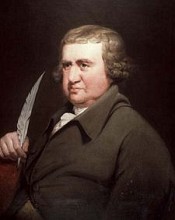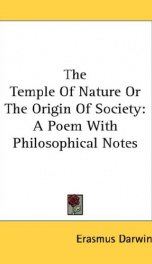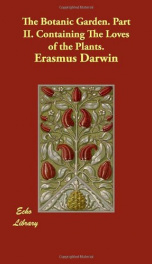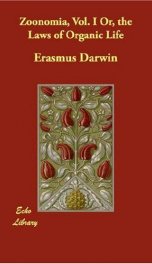Darwin Erasmus

Erasmus Darwin (12 December 1731 – 18 April 1802) was an English physician who turned down the invitation of George III for him to be a Royal Physician. He was also a natural philosopher, physiologist, abolitionist, inventor and poet. His poems included much natural history, including a statement of evolution and the relatedness of all forms of life. He was a founding member of the Lunar Society, a discussion group of pioneering industrialists and natural philosophers. He was a member of the Darwin-Wedgwood family, which includes his grandsons Charles Darwin and Francis Galton. Erasmus Darwin's house in Lichfield is now open as a museum dedicated to Erasmus Darwin and his life's work.(Erasmus Darwin House). Born at Elston Hall, Nottinghamshire near Newark-on-Trent, England, the youngest of seven children of Robert Darwin of Elston (12 August 1682–20 November 1754), a lawyer, and his wife Elizabeth Hill (1702–1797). His parents' choice of name, Erasmus, is an unusual one; the most historically significant person of that name was Desiderius Erasmus, the great humanist. His siblings were: He was educated at Chesterfield Grammar School, then later at St John's College, Cambridge.[1] He obtained his medical education at Edinburgh Medical School. Whether Darwin ever obtained the formal degree of MD is not known. Darwin settled in 1756 as a physician at Nottingham, but met with little success and so moved the following year to Lichfield to try to establish a practice there. A few weeks after his arrival, using a novel course of treatment, he restored the health of a young man whose death seemed inevitable. This ensured his success in the new locale. Darwin was a highly successful physician for more than fifty years in the Midlands. George III invited him to be Royal Physician, but Darwin declined. In Lichfield, Darwin wrote "didactic poetry, developed his system of evolution, and invented amongst other things, an organ able to recite the Lord's Prayer, the Creed, and the Ten Commandments".[2] Darwin married twice and had 14 children, including two illegitimate daughters by an employee, and, possibly, at least one further illegitimate daughter. In 1757, he married Mary (Polly) Howard (1740–1770). They had four sons and one daughter, two of whom (a son and a daughter) died in infancy: The first Mrs. Darwin died in 1770. A governess, Mary Parker, was hired to look after Robert. By late 1771, employer and employee had become intimately involved and together they had two illegitimate daughters: Susanna and Mary Jr later established a boarding school for girls. In 1782, Mary Sr (the governess) married Joseph Day (1745–1811), a Birmingham merchant, and moved away. Darwin may have fathered another child, this time with a married woman. A Lucy Swift gave birth in 1771 to a baby, also named Lucy, who was christened a daughter of her mother and William Swift, but there is reason to believe the father was really Darwin.[3] Lucy Jr. married John Hardcastle in Derby in 1792 and their daughter, Mary, married Francis Boott, the physician. In 1775, Darwin met Elizabeth Pole, daughter of Charles Colyear, 2nd Earl of Portmore, and wife of Colonel Edward Pole (1718–1780); but as she was married, Darwin could only make his feelings known for her through poetry. When Edward Pole died, Darwin married Elizabeth and moved to her home, Radbourne Hall, four miles (6 km) west of Derby. The hall and village are these days known as Radbourne. In 1782, they moved to Full Street, Derby. They had four sons, one of whom died in infancy, and three daughters: Darwin died suddenly on the 18 April 1802, weeks after having moved to Breadsall Priory, just north of Derby. He is buried in All Saints Church, Breadsall. Erasmus Darwin is commemorated on one of the Moonstones, a series of monuments in Birmingham. Darwin formed the Lichfield Botanical Society in order to translate the works of the Swedish botanist Carolus Linnaeus from Latin into English. This took seven years. The result was two publications: A System of Vegetables between 1783 and 1785, and The Families of Plants in 1787. In these volumes, Darwin coined many of the English names of plants that we use today. Darwin then wrote The Loves of the Plants, a long poem, which was a popular rendering of Linnaeus' works. Darwin also wrote Economy of Vegetation, and together the two were published as The Botanic Garden. Darwin's most important scientific work is Zoönomia (1794–1796), which contains a system of pathology, and a treatise on "generation", in which he anticipated the views of Jean-Baptiste Lamarck, and Lamarckism, which foreshadowed the modern theory of evolution and the modern evolutionary synthesis. Darwin based his theories on David Hartley's psychological theory of associationism.[4] The essence of his views is contained in the following passage, which he follows up with the conclusion that one and the same kind of living filament is and has been the cause of all organic life: Would it be too bold to imagine that, in the great length of time since the earth began to exist, perhaps millions of ages before the commencement of the history of mankind would it be too bold to imagine that all warm-blooded animals have arisen from one living filament, which the great First Cause endued with animality, with the power of acquiring new parts, attended with new propensities, directed by irritations, sensations, volitions and associations, and thus possessing the faculty of continuing to improve by its own inherent activity, and of delivering down these improvements by generation to its posterity, world without end! Erasmus Darwin was familiar with the earlier evolutionary thinking of James Burnett, Lord Monboddo, and cited him in his 1803 work Temple of Nature. Erasmus Darwin offered the first glimpse of his theory of evolution, obliquely, in a question at the end of a long footnote to his popular poem The Loves of the Plants (1789), which was republished throughout the 1790s in several editions as The Botanic Garden. His poetic concept was to anthropomorphize the stamen (male) and pistil (female) sexual organs, as bride and groom. In this stanza on the flower Curcuma (also Flax and Tumeric) the "youths" are infertile, and he devotes the footnote to other examples of neutered organs in flowers, insect castes, and finally associates this more broadly with many popular and well-known cases of vestigal organs (male nipples, the third and fourth wings of flies, etc.) "Curcuma_. l. 65. Turmeric. One male and one female inhabit this flower; but there are besides four imperfect males, or filaments without anthers upon them, called by Linneus eunuchs. The flax of our country has ten filaments, and but five of them are terminated with anthers; the Portugal flax has ten perfect males, or stamens; the Verbena of our country has four males; that of Sweden has but two; the genus Albuca, the Bignonia Catalpa, Gratiola, and hemlock-leaved Geranium have only half their filaments crowned with anthers. In like manner the florets, which form the rays of the flowers of the order frustraneous polygamy of the class syngenesia, or confederate males, as the sun-flower, are furnished with a style only, and no stigma: and are thence barren. There is also a style without a stigma in the whole order dioecia gynandria; the male flowers of which are thence barren. The Opulus is another plant, which contains some unprolific flowers. In like manner some tribes of insects have males, females, and neuters among them: as bees, wasps, ants." "There is a curious circumstance belonging to the class of insects which have two wings, or diptera, analogous to the rudiments of stamens above described; viz. two little knobs are found placed each on a stalk or peduncle, generally under a little arched scale; which appear to be rudiments of hinder wings; and are called by Linneus, halteres, or poisers, a term of his introduction. A.T. Bladh. Amaen. Acad. V. 7. Other animals have marks of having in a long process of time undergone changes in some parts of their bodies, which may have been effected to accommodate them to new ways of procuring their food. The existence of teats on the breasts of male animals, and which are generally replete with a thin kind of milk at their nativity, is a wonderful instance of this kind. Perhaps all the productions of nature are in their progress to greater perfection! an idea countenanced by the modern discoveries and deductions concerning the progressive formation of the solid parts of the terraqueous globe, and consonant to the dignity of the Creator of all things." Darwin's final long poem, The Temple of Nature, was published posthumously in 1803. The poem was originally titled The Origin of Society. It is considered his best poetic work. It centers on his own newly-conceived theory of evolution. The poem traces the progression of life from microorganisms to civilized society. Darwin largely anticipated most of what his grandson Charles Darwin would later propose, except for the idea of natural selection. His poetry was admired by Coleridge and Wordsworth. It often made reference to his interests in science; for example botany and steam engines. The last two leaves of Darwin's A plan for the conduct of female education in boarding schools (1797) contain a book list, an apology for the work, and an advert for "Miss Parkers School". The work probably resulted from his liaison with Mary Parker. The school advertised on the last page is the one he set up in Ashbourne, Derbyshire for their two illegitimate children, Susanna and Mary. Darwin regretted that a good education had not been generally available to women in Britain in his time, and drew on the ideas of Locke, Rousseau, and Genlis in organising his thoughts. Addressing the education of middle class girls, Darwin argued that amorous romance novels were inappropriate and that they should seek simplicity in dress. He contends that young women should be educated in schools, rather than privately at home, and learn appropriate subjects. These subjects include physiognomy, physical exercise, botany, chemistry, mineralogy, and experimental philosophy. They should familiarize themselves with arts and manufactures through visits to sites like Coalbrookdale, and Wedgwood's potteries; they should learn how to handle money, and study modern languages. Darwin's educational philosophy took the view that men and women should have different, but complementary capabilities, skills, spheres, and interests.[5] In the context of the times, this program may be read as a modernising influence.
do you like this author?
What readers are saying
What do you think? Write your own comment on this book!
write a commentWhat readers are saying
What do you think? Write your own comment on this author!
write a commentBook list

The Temple of Nature; or,the Origin of SocietyA Poem,with Philosophical Notes
Series:
Unknown
Year:
Unknown
Raiting:
4/5
Show more
add to favoritesadd In favorites
Book list

The Temple of Nature; or,the Origin of SocietyA Poem,with Philosophical Notes
Series:
Unknown
Year:
Unknown
Raiting:
4/5
Show more
add to favoritesadd In favorites

The Botanic Garden. Part II.Containing the Loves of the Plants. a Poem.With Philosophical Notes.
Series:
Unknown
Year:
Unknown
Raiting:
4.5/5
Show more
add to favoritesadd In favorites

The Botanic Garden
A Poem in Two Parts. Part 1: the Economy of Vegetation
Series:
Unknown
Year:
Unknown
Raiting:
4/5
Show more
add to favoritesadd In favorites

zoonomia or the laws of organic life in three parts volume 2
Series:
Unknown
Year:
Unknown
Raiting:
4/5
Show more
add to favoritesadd In favorites

the national encyclopaedia a dictionary of universal knowledge volume 10
Series:
Unknown
Year:
Unknown
Raiting:
3.5/5
Show more
add to favoritesadd In favorites

the moral light or reproductions of articles from the old files of awr ameth
Series:
Unknown
Year:
Unknown
Raiting:
4.5/5
Show more
add to favoritesadd In favorites

a plan for the conduct of female education in boarding schools private familie
Series:
Unknown
Year:
Unknown
Raiting:
4.5/5
Show more
add to favoritesadd In favorites

Zoonomia, Vol. II
Series:
Unknown
Year:
Unknown
Raiting:
4.5/5
PREFACE.All diseases originate in the exuberance, deficiency, or retrograde action, of the faculties of the sensorium, as their proximate cause; and consist in the disordered motions of the fibres of the body, as the proximate effect of the exertions of those disordered faculties.The sensorium possesses four distinct powers, or faculties, which are occasionally exerted, and produce all the motions of the fibrous parts of the body; these are the faculties of producing fibrous motions in consequence of irritation which is excited by external bodies; in consequence of sensation which is excited by pleasure or pain; in consequence of volition which is excited by desire or aversion; and in consequence of association which is excited by other fibrous motions. We are hence supplied with four natural classes of diseases derived from their proximate causes; which we shall term those of irritation, those of sensation, those of volition, and those of association.In the subsequent classification of diseases I have not adhered to the methods of any of those, who have preceded me; the principal of whom are the great names of Sauvages and Cullen; but have nevertheless availed myself, as much as I could, of their definitions and distinctions.
Show more
add to favoritesadd In favorites

The Temple of Nature; or, the Origin of Society
Series:
Unknown
Year:
Unknown
Raiting:
4/5
Show more
add to favoritesadd In favorites

The Botanic Garden. Part II.
Series:
Unknown
Year:
Unknown
Raiting:
4.5/5
This book was converted from its physical edition to the digital format by a community of volunteers. You may find it for free on the web. Purchase of the Kindle edition includes wireless delivery.
Show more
add to favoritesadd In favorites
What readers are saying
What do you think? Write your own comment on this author!
write a commentif you like Darwin Erasmus try:
readers also enjoyed
What readers are saying
What do you think? Write your own comment on this author!
write a commentGenre
if you like Darwin Erasmus try:
readers also enjoyed
Do you want to read a book that interests you? It’s EASY!
Create an account and send a request for reading to other users on the Webpage of the book!


